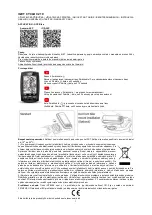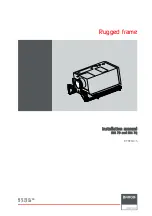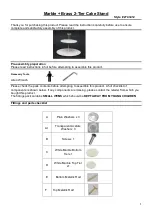
VEGAPULS 51K … 54K
45
21750-EN-031222
Ampl.:
XX dB
S-N:
XX dB
7. Useful level, noise level
In the menu
you get important information on the signal
quality of the product echo. The greater the
"S-N“ value, the more reliable the measure-
ment (menu plan MINICOM).
Ampl.:
means amplitude of the level echo in
dB (useful level)
S-N:
means Signal-Noise, i.e. the useful
level minus the level of the back-
ground noise
The greater the "S-N“ value (difference be-
tween the amplitudes of the useful signal level
and the noise level), the better the measure-
ment:
> 50 dB
Measurement excellent
40 … 50 dB
Measurement very good
20 … 40 dB
Measurement good
10 … 20 dB
Measurement satisfactory
5 … 10 dB
Measurement sufficient
< 5 dB
Measurement poor
Example:
Ampl. = 68 dB
S-N = 53 dB
68 dB – 53 dB = 15 dB
This means that the noise level is only
68 dB – 53 dB = 15 dB.
A 15 dB noise level and a 53 dB signal differ-
ence yield a high degree of measurement
reliability.
8. Outputs
Under the menu "Outputs“ you determine, for
example, whether the current output should
be inverted, or which unit of measurement
should be shown on the sensor display.
• Confirm with "
OK“.
If necessary, set the decimal point. However,
note that only max. 4 digits can be displayed.
In the menu "
prop. to“ you choose the physi-
cal quantity (mass, volume, distance…) and
in the menu "
Unit“ the physical unit (kg, l, ft
3
,
gal, m
3
…).
Linearisation:
Lin.
curve
Linear
Integra
tion
time
0 s
Adjust
ment
Signal
condit
ioning
Scal
ing
A linear correlation between the percentage
value of the product distance and percent-
age value of the filling volume has been pre-
set. With the menu "Lin. curve“ you can
choose between linear, spherical tank and
cylindrical tank. The generation of a custom-
ized linearisation curve is only possible with
the PC and the adjustment program VVO.
5. Meas. conditions
(see menu plan no. 5)
Choose "Liquid“ or "Solid“ and the options
corresponding to your application.
6. False echo memory
A false echo storage is always useful when
unavoidable false echo sources (e.g. struts)
must be minimised. By creating a false echo
memory, you authorise the sensor electronics
to record the false echoes and save them in
an internal database. The sensor electronics
treats these (false) echoes differently from
the useful echoes and filters them out.
Set-up
Summary of Contents for VEGAPULS 51K
Page 1: ...Operating Instructions VEGAPULS 51K 54K 4 20 mA HART compact sensor...
Page 41: ...VEGAPULS 51K 54K 41 21750 EN 031222 Rx VEGAMET VEGALOG Ri 250 250 Ri 250 Set up PLC PLC...
Page 49: ...VEGAPULS 51K 54K 49 21750 EN 031222 Set up VEGALOG VEGAMET Rx...
Page 70: ...70 VEGAPULS 51K 54K 21750 EN 031222 Supplement CE declaration of conformity...
Page 71: ...VEGAPULS 51K 54K 71 21750 EN 031222 Supplement...
















































